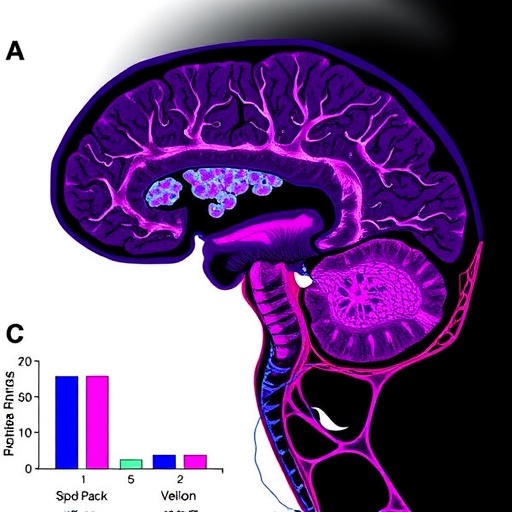In a groundbreaking announcement set to reshape the landscape of cardiometabolic therapeutics, Insilico Medicine, a clinical-stage biotechnology company propelled by generative artificial intelligence (AI), has unveiled a novel portfolio of highly differentiated small molecule drug candidates. This portfolio, developed using its proprietary Pharma.AI platform, targets an array of mechanisms implicated in cardiometabolic diseases, ranging from well-established targets like GLP-1R and GIPR to emerging novel entities such as NLRP3 and NR3C1. The comprehensive program spans various stages of drug development, from early discovery through preclinical phases, demonstrating Insilico’s commitment to leveraging advanced computational methods to accelerate drug discovery and deliver unprecedented therapeutic innovation.
Central to this drug portfolio are two orally bioavailable small molecules acting as agonists for the glucagon-like peptide-1 receptor (GLP-1R), which play pivotal roles in glucose homeostasis and body weight regulation. These molecules are designed with novel chemistries optimized for enhanced safety profiles and pharmacokinetic properties enabling low-dose regimens and compatibility with multi-drug combinations. One of the candidates is engineered for sustained once-weekly dosing, a significant advancement offering therapeutic convenience and potentially improved adherence compared to daily dosing schedules currently dominating the market. This targeted approach addresses the growing need for more effective, safer, and patient-friendly formulations in the treatment of metabolic syndrome, obesity, and type 2 diabetes.
Beyond GLP-1R agonists, Insilico’s pipeline includes a proprietary antagonist of the NR3C1 receptor, also known as the glucocorticoid receptor. This selective blocker aims to mitigate hypercortisolism-induced metabolic dysfunctions, such as those observed in Cushing’s syndrome and other cortisol-excess conditions. Improved solubility and permeability combined with an absence of CYP3A4 inhibition mark this molecule as a promising candidate with potentially enhanced pharmacological efficacy and reduced drug-drug interaction risks. Preclinical data indicate superior in vivo exposure and efficacy, which could translate to meaningful clinical benefits for patients suffering from metabolic disorders linked to glucocorticoid excess.
Among the portfolio’s most advanced compounds is ISM8969, an orally bioavailable, brain-penetrant small molecule inhibitor targeting the NLRP3 inflammasome, a critical mediator implicated in neuroinflammation and systemic inflammatory diseases. This molecule stands out due to its selectivity and favorable pharmacokinetic profile, including robust penetration across the blood-brain barrier and promising in vitro safety metrics. Preclinical efficacy has been demonstrated across diverse models of Parkinson’s disease, peritonitis, pancreatitis, and multiple sclerosis, indicating broad therapeutic potential. The oral availability and central nervous system targeting capabilities distinguish ISM8969 from other NLRP3 inhibitors, many of which remain limited by peripheral distribution.
The early-stage programs within the portfolio expand Insilico’s reach into metabolic regulation through targeting receptors such as GIPR, Amylin, APJ, and lipoprotein (a) [Lp(a)]. The dual amylin and calcitonin receptor agonist program exemplifies innovation by combining receptor activations to promote satiety, enhance glycemic control, and produce synergistic metabolic benefits. Similarly, the GIPR antagonist exemplifies next-generation design, enhancing insulin secretion and lipid metabolism while optimizing oral bioavailability and receptor selectivity. The APJ-targeting molecule has been carefully engineered for biased agonism, prioritizing G-protein signaling over β-arrestin pathways to circumvent cardiac hypertrophy and inflammatory responses typically associated with non-selective agonists. The inclusion of a novel Lp(a) lowering molecule with improved pharmacokinetics and safety profile offers a new avenue for addressing cardiovascular risk factors resistant to conventional therapies.
Insilico’s strategic application of AI and multi-parameter optimization has not only yielded molecules with novel structures but has also significantly improved traditional drug development timelines and costs. Their unique approach requires considerably fewer synthesized compounds — between 60 and 200 molecules per program — a stark contrast to conventional methods that often involve synthesizing thousands of candidates over multiple years. This efficiency is underscored by the nomination of 22 preclinical candidates at an accelerated rate of 12 to 18 months per program. Such achievements highlight the transformative potential of integrating generative AI with deep experimental validation in streamlining early-stage drug discovery.
The company’s pipeline extends beyond cardiometabolic diseases, encompassing fibrosis, oncology, immunology, and inflammatory disorders. Notably, Rentosertib, an AI-discovered anti-fibrotic agent, recently completed Phase 2a clinical trials, showcasing promising safety and efficacy signals in treating fibrotic diseases. ISM5411, targeting inflammatory bowel disease through inhibition of prolyl hydroxylase domain proteins 1 and 2 (PHD1/2), has completed Phase I trials demonstrating a gut-restricted pharmacokinetic profile and favorable safety. These milestones illustrate Insilico’s ability to translate computational drug design into clinically relevant candidates across diverse therapeutic areas.
Scientific dissemination plays a critical role in Insilico’s corporate philosophy. Since early 2024, the company has published six significant papers in top-tier journals within the Nature portfolio, providing transparency and peer validation of its AI-enabled drug discovery methods and resulting candidates. These publications include breakthroughs in targeting fibrosis, intestinal barrier repair, KRAS inhibitors via quantum-enhanced algorithms, pan-coronavirus Mpro inhibition, STING pathway modulation for solid tumors, and advanced clinical data on Rentosertib. This robust scientific output underscores the company’s commitment to advancing the frontiers of biomedical research while demonstrating real-world impact.
Insilico’s recognition as one of the Top 100 global corporate institutions in the 2025 Nature Index Research Leaders in biological and natural sciences publications confirms its prominent status in scientific innovation. This accolade reflects the successful integration of artificial intelligence, automated laboratories, and multi-disciplinary expertise to redefine drug discovery paradigms. By leveraging these technologies, Insilico aims to address unmet medical needs more rapidly and efficiently than traditional pharmaceutical models typically allow.
The company’s proprietary Pharma.AI platform synergizes deep learning, generative chemistry, and systems biology to not only predict molecule-target interactions but also simultaneously optimize multiple pharmacokinetic and pharmacodynamic parameters. This multi-dimensional optimization ensures that candidates are balanced for target potency, safety, bioavailability, metabolic stability, and ease of synthesis. Such a holistic approach significantly raises the bar for computational drug design, setting a new industry standard where artificial intelligence accelerates rather than merely supports discovery.
Looking forward, Insilico’s cardiometabolic portfolio encapsulates a paradigm shift toward precision-designed combination therapies, where low-dose synergistic molecules can be used together to modulate complex disease pathways. Targeting multiple receptors implicated in metabolic regulation and inflammation aligns with emerging understanding that multifactorial intervention is necessary to effect durable clinical outcomes for chronic cardiometabolic disease. This multi-target strategy, made feasible and scalable through AI-driven drug design, heralds a new era of personalized longevity medicine.
In conclusion, Insilico Medicine’s launch of this extensive portfolio of AI-designed cardiometabolic drug candidates represents a milestone at the convergence of biotechnology and artificial intelligence. By delivering novel molecular entities with enhanced safety, preferential pharmacokinetics, and combinatorial potential, the company exemplifies how next-generation computational platforms can transform the drug discovery landscape. These advancements not only promise improved outcomes for patients suffering from obesity, diabetes, cardiovascular, and inflammatory diseases but also demonstrate a scalable model for future therapeutic development across medical disciplines.
Subject of Research: AI-driven discovery and development of small molecule therapeutics for cardiometabolic diseases
Article Title: Pushing the Frontiers of Generative AI for Longevity: Insilico Medicine Unveils Portfolio of Multiparameter-Optimized Cardiometabolic Assets
News Publication Date: November 7, 2025
Web References:
– https://insilico.com
– https://pharma.ai
– Selected Nature portfolio articles linked within the release
References:
– Zhavoronkov A, et al. (2025) Various articles in Nature Biotechnology, Nature Communications, and Nature Medicine detailing AI-enabled drug discovery advancements by Insilico Medicine.
Image Credits: Insilico Medicine
Keywords: AI-driven drug discovery, cardiometabolic disease, GLP-1 receptor agonists, NLRP3 inhibitor, NR3C1 antagonist, generative AI, pharmacokinetics, drug development, metabolic disorders, oral small molecules, precision medicine, longevity therapeutics
Tags: cardiometabolic therapeuticsgenerative AI in drug discoveryGLP-1R agonistsinnovative drug developmentInsilico Medicinemulti-drug combinationsoptimized pharmacokinetic propertiespatient-friendly drug formulationsPharma.AI platformpreclinical drug developmentsmall molecule drug candidatestherapeutic innovation in longevity research





